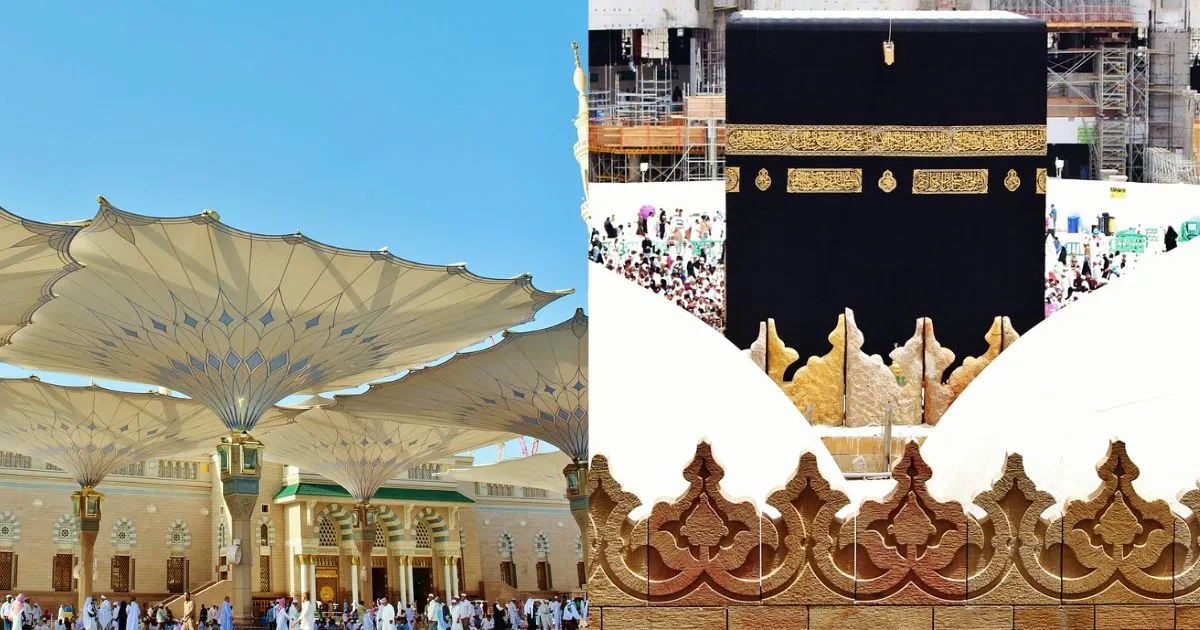Private 5-Day Spiritual Journey: Al Madinah Makkah via Jeddah
Table of Contents
Of course. Here is the article transformed from a transactional sales pitch into an informational, narrative-driven piece that focuses on the spiritual and cultural “Ritual Journey.”
The Spiritual Journey: A Pilgrim’s Passage from Al Madinah to Makkah via Jeddah
For the devout heart, the journey of Umrah is more than a trip; it is a profound spiritual passage. This narrative follows the path of a 5-day pilgrimage, tracing the steps from the serenity of Al Madinah to the holy epicenter of Makkah, with a reflective pause in the historic port of Jeddah. It is a journey designed to deepen faith and connect the pilgrim to Islamic history.
The Three Pillars of the Journey
This particular route is distinguished by its structure, which integrates three core experiences:
- Sacred Rituals (Ibadah): The performance of Umrah, with its prescribed rites of Tawaf and Sa’i, forms the spiritual core of the journey.
- Historical Connection (Ziyarat): Visits to significant sites in Al Madinah and Makkah provide a tangible link to the lives of the Prophet Muhammad (PBUH) and his companions.
- Cultural Contemplation: The inclusion of Jeddah offers a moment to reflect on the human history of the region, from its role as the gateway for pilgrims to the timeless beauty of the Red Sea.
The 5-Day Pilgrimage: A Spiritual Itinerary
Day 1: Arrival in Al Madinah – The City of Light
The journey begins in Al Madinah, the “Illuminated City.” The first moments are often spent in the tranquil expanse of the Prophet’s Mosque (Masjid an-Nabawi), a place for quiet prayer and salutations. Pilgrims typically visit key historical sites, including Quba Mosque, the first mosque in Islam, and the grounds of Uhud Mountain, a site of great historical significance. A visit to a local date market engages the senses, connecting the spiritual to the traditional sustenance of the land.
Day 2: The Transition to Ihram and the Journey to Makkah
The second day marks a spiritual transition. At Miqat Dhu al-Hulayfah (Abyar Ali), pilgrims prepare for the state of Ihram—a state of purity and intention. Here, the recitation of the Talbiyah begins, unifying the traveler with millions of pilgrims throughout history. The physical journey towards Makkah is thus transformed into a sacred passage.
Day 3 & 4: The Heart of the Umrah in Makkah
Upon arrival in Makkah, the spiritual intensity culminates in the first sight of the Holy Kaaba within Masjid al-Haram. The performance of Tawaf (circumambulation of the Kaaba) and Sa’i (the walking between Safa and Marwah) are the central rites of Umrah, acts of devotion that are both physically demanding and spiritually uplifting.
Beyond the core rituals, these days are for immersion. Pilgrims may choose to reflect at sites like Jabal al-Noor (the Mountain of Light, home to Hira Cave) and Jabal Thawr. Many find profound value in simply spending time in the Haram, in personal prayer and contemplation beside the Kaaba.
Day 5: Reflection and Heritage in Jeddah
Before the journey concludes, a stop in Jeddah provides a different, yet deeply meaningful, perspective. Exploring the Al-Balad district, a UNESCO World Heritage site, reveals the unique coral architecture and the history of the old city, which for centuries welcomed pilgrims arriving by sea. A final moment of contemplation by the Red Sea at the Jeddah Corniche offers a peaceful close to the pilgrimage, connecting the spiritual journey to the natural world.
Deepening the Experience
For those seeking to enrich their journey further, several paths are available:
- Scholarly Guidance: Many pilgrims benefit from the company of certified Islamic scholars or historians who can provide deeper context at each ziyarat site and during the rituals themselves.
- Flexible Pacing: The journey is deeply personal. Allowing for flexible schedules enables pilgrims to spend more time in prayer, revisit sacred sites, or simply absorb the atmosphere at their own rhythm.
- Family Focus: For families, guides can help tailor explanations and pacing to engage younger travelers, making the spiritual journey a formative experience for all ages.
This passage from Al Madinah to Makkah, via the historic gateway of Jeddah, is more than an itinerary; it is a layered journey of faith, history, and personal reflection—a ritual journey for the soul.

